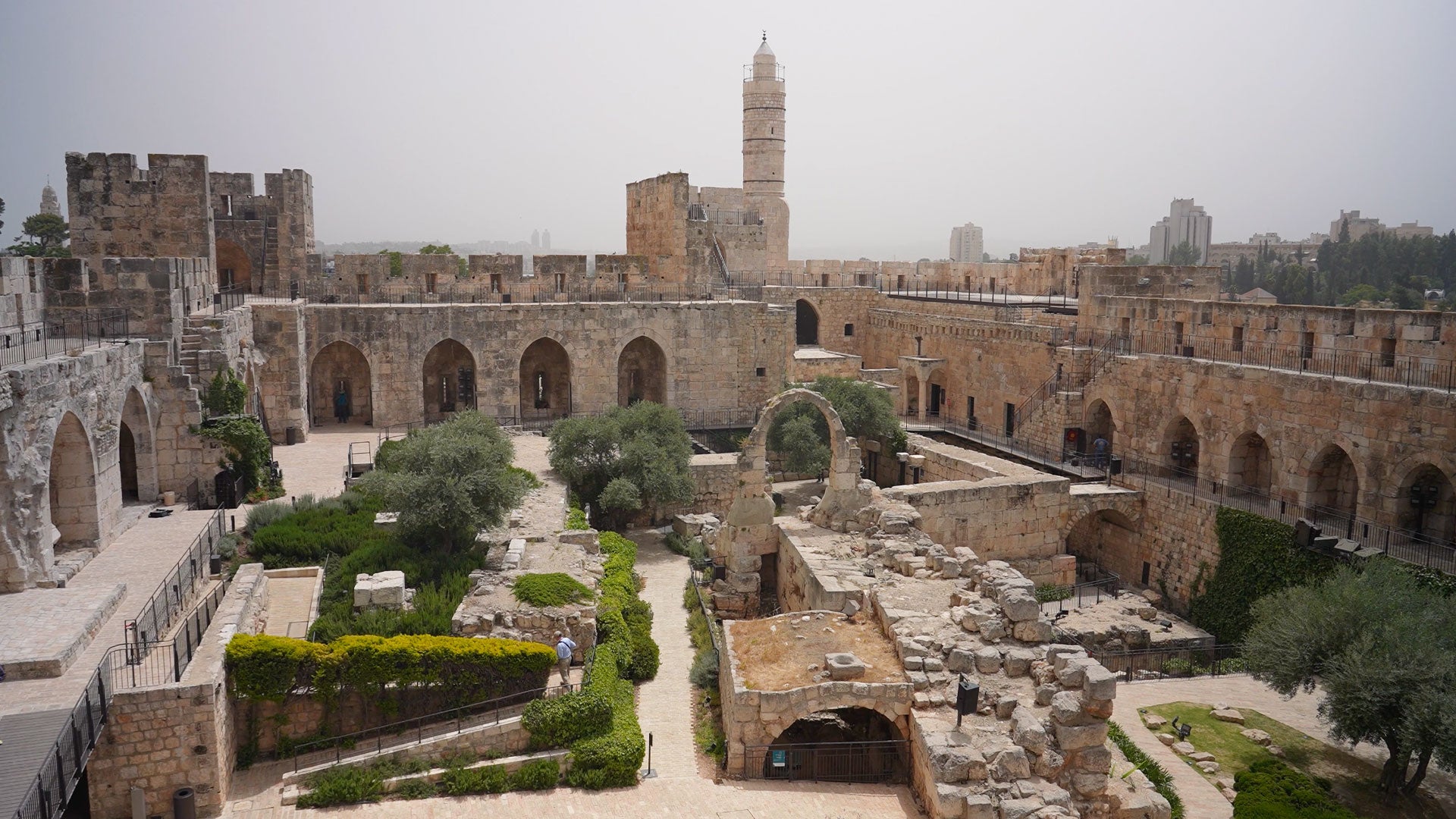
One of Jerusalem’s ancient landmarks is taking a giant leap into the world of technology. Visitors can now not only see the ancient stones of the renovated Tower of David Museum but also touch and follow its history.
The Tower of David Museum takes visitors through 3,600 years of the ancient city’s history. Dubbed the “Tower of David”, one massive tower was actually built by King Herod and later a minaret built in 1635. Within the walls of the citadel, are parts that date back 2,800 years to the times of the biblical Kings and parts of Jerusalem dating back hundreds of years.
The museum first opened in 1989. Museum Director Eilat Leiber says the age of the infrastructure meant a major upgrade was planned for a decade and renovations have gone on for three years at a cost of 50 million dollars.
“We wanted to engage the visitors, especially the young generation with the story (of Jerusalem) by adding technology, interactive media, and of course the real objects that came back home to the Citadel,” Leiber told CBN News.
“Jerusalem has a secret else how we can explain what Jerusalem is, how it became so sacred to so many people, the world over,” said Tal Kobo, Curator of the Museum.
And while the rule in most museums is: “Please don’t touch,” this newly renovated version shares a different message: “Please touch!”
“We want them to touch, to engage, and be intrigued about what they’re doing in the museum,” Kobo told CBN News.
Kobo says the exhibits now tell a thematic story.
“The first gallery is talking about the scope of time, how long, and all the cultures and empires that ruled the city,” she said.
There are 12 interactive screens, in the first gallery, chronicling the history of Jerusalem and they’re meant to be touched. One of them, for example, has the British Mandate period from 1917-1948. It can be viewed in English, Hebrew, and Arabic. There’s a map of the city, an animation that shows what world events were happening at the time, and the timeline of Jerusalem.
Creative Director Yoav Cohen says his team took on the challenge of telling these stories in a creative, experiential, and user-friendly way.
“We’re making movies, we’re making interactive, we’re making computer games,” Cohen said. “It is a very thin line between telling the interesting story and to be an (engaging), and to be precise on the other side and correct with history.”
The second, third, and fourth galleries show how Jerusalem became sacred to Judaism, Christianity, and Islam. Each consists of a model with its own iconic building, such as the Second Jewish Temple, although it was gone by the end of the first century.
“Mostly Jewish people did not (live) in Jerusalem. The city of Jerusalem still existed and those objects that have the menorah symbolize the connection to Jerusalem, the importance of the symbol to the Jewish identity at the time, objects from the 5th and 6th century from the Land of Israel,” Kobo said.
Museum Consultant on Christianity, Yisca Harani, says Jerusalem has been seen through a prism influenced by the Byzantine Era of the Roman Empire for nearly 1,700 years.
“This is the room of Christianity. In the center there’s this huge model of the Church of the Holy Sepulchre,” Harani told CBN News.
“Byzantine Jerusalem laid the foundations for how people perceive Jerusalem in history. This is why there’s the beautiful replica made by mosaic – by these little stones – of the Madaba map.
Found in a church in Jordan, that is the oldest known map of the Holy Land and Jerusalem.
“So, this room is also titled Sacred Geography because what drew the Christians here was to see the sacred geography. Jesus came into a geography.
And the Muslim gallery has a replica of the Dome of the Rock on the Temple Mount.
“This is an original mosque that we are actually standing in. Someone asked me the question about touching the exhibition. Well, I think there is no replace(ment) to touching the walls,” Kobo said.
Part of the renovation included making the ancient fortress more accessible to those physically challenged. That included adding two elevators so all visitors could see the 10 galleries. They still, however, couldn’t reach the observation deck.
“We came with the idea, of using VR glasses or another product, 360 degrees, footage that we took of the observation in order that everyone would be able to see our beautiful observation,” said Reut Kozak, head of Accessibility and Inclusion at the Museum.
Leiber calls it the gateway to Jerusalem.
“The Tower of David is of course, a very unique building, the fortress of Jerusalem, this symbol of the city that represents the power, the beauty of Jerusalem for many ages,” she said.
The remainder of this article is available in its entirety at CBN

